The Corsair RM1000x and RM1000i 1000W Power Supply Review
by E. Fylladitakis on September 30, 2015 8:00 AM EST- Posted in
- Cases/Cooling/PSUs
- Corsair
- RM Series
- Corsair Link
The Corsair RM1000i & RM1000x PSU - External Appearance
Physically, the RM1000i and RM1000x are nearly identical to each other. Their chassis is sprayed with a matte black color that is well applied and fingerprint-resistant. Further aesthetic improvements include chamfered side edges and side stickers with the model's number printed on them.
Another sticker can be found at the top of the chassis, with the electrical specifications of the unit. Both models are using the same 180mm long chassis. Note that this chassis is significantly longer than a standard ATX design (140mm) and may not fit into some designs, especially very compact layouts.
The front of the PSUs are littered with the numerous connectors for the modular cables. The number and type of connectors is identical, with the sole exception that the RM1000x lacks the Corsair Link interface connectors and the test button. There is a very basic legend printed beneath each group of connectors. Both the PCI-Express and the CPU 12V cables use the same connectors, the 6-pin connectors are for the SATA/Molex cables and the split 10+18 connector is for the 24-pin ATX cable.
The Corsair RM1000i & RM1000x PSU - Internal Design
The 135mm fan responsible for the cooling of the RM1000i and the RM1000x is a Corsair NR135P fan. As even the UL certification number points back to Corsair, this technically is Corsair's own unique product and not a re-branded fan, though it's a safe bet that ultimately some hereto-unknown Chinese factory still makes it for them. It has a FDB bearing and a maximum speed of about 1500 RPM. At this point we should note that both of the units feature a "zero-RPM fan mode", meaning that the fan will not start before the load is significant and component temperatures will require active cooling.
Both the RM1000i and the RM1000x are virtually identical on the inside as well, with the mere difference being the RM1000x lacking the circuitry related to the Corsair Link interface. The OEM behind their creation is Channel Well Technologies (CWT) and both units actually are an upgrade of the design that the RM1000 was based upon.

RM1000i (left) & RM1000x (right)
The first notable upgrade is the heatsinks. The heatsinks of the RM1000 were preposterously small for a PSU with that kind of output and rightfully Corsair thought that they would be a good place to start upgrading. Most of their focus was placed on the heatsink cooling the transistors at the primary side of the transformer, which is a huge upgrade over the small solid block of metal we saw in the original RM1000. The heatsink holding the APFC diode and transistors is still a solid block but it is a little longer.
The second upgrade is the sizing and the quality of the components. At the primary side, the APFC capacitors are still supplied by Nippon Chemi-Con but they are one 680μF and one 470μF capacitor, for a whopping total capacitance of 1150μF. The original RM1000 had two 390μF capacitors instead. Note that the capacitors of the RM1000i and the RM1000x may look physically different, but they actually are identical (KMR vs KMW series). Only their physical proportions differ and Corsair may be using either model depending on their availability. All of the secondary side capacitors, electrolytic and polymer alike, are now supplied by Nippon Chemi-Con as well, not TAICON and CapXon.
There are no sizable heatsinks at the secondary side of the transformer. The rectifying MOSFETs are being cooled by small metallic bars, some of which are being used as current distribution bars as well. Corsair is also using a lot of silicon glue throughout the unit, in an effort to enhance its mechanical cohesion. They seem to have placed a particular amount of effort to minimize electromagnetic vibration noise, or "coil whine", by placing a lot of glue on every inductor of the unit. They even wrapped the larger inductors with insulating material.
This vertical PCB is the only part that is notably different between the two units. Where the RM1000i has a microcontroller, the RM1000x is plain and shorted to follow only a core, pre-programmed thermal control set of instructions. The RM1000i's stock fan profile is identical but can be adjusted via the Corsair Link interface.


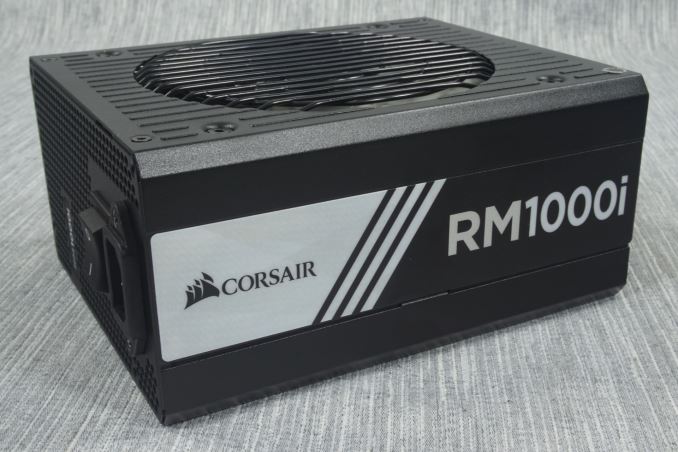
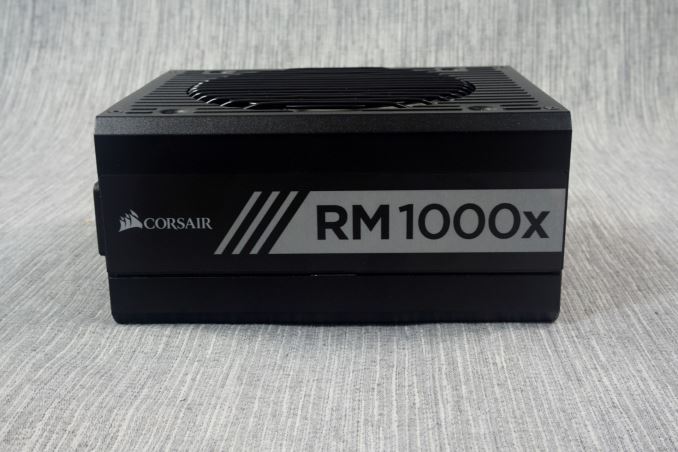
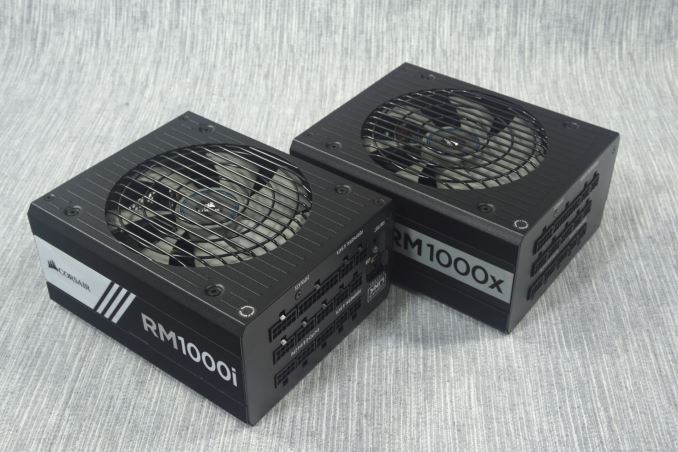
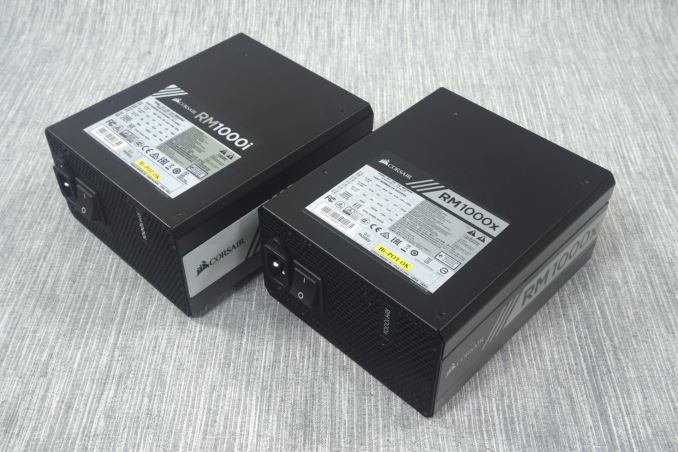
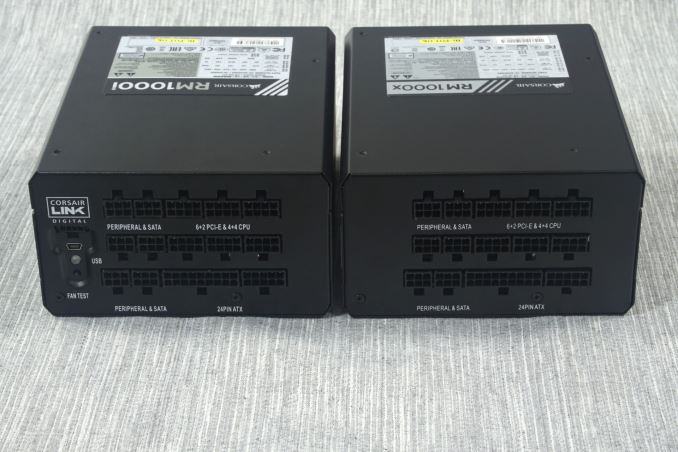
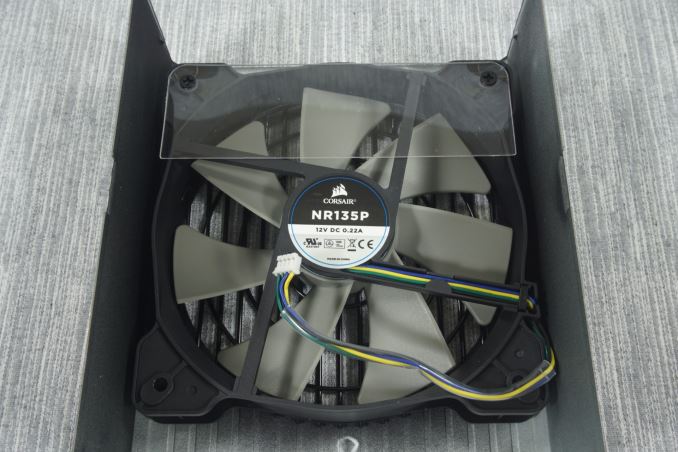






















47 Comments
View All Comments
HOOfan 1 - Thursday, October 1, 2015 - link
There is about a 2% difference in efficiency between these 1000W PSUs, and a 650W 80 plus Platinum PSU at 100W of DC usage. So, we are talking about using an extra 2 Watts...big whoop.lozikosaz - Thursday, October 1, 2015 - link
1- Those numbers are made up by you.2- You are ignoring different vendors and models.
3- A modern, powerful rig may consume like 50W when browsing or doing office work.
4- There is nothing wrong in saving 1% of power by using a more appropriate PSU, and surely a cheaper one.
HOOfan 1 - Thursday, October 1, 2015 - link
1- No they are made by actually reading reviews and looking at the numbers.Go find Kitguru's review of the RM1000x. They get 87.32% efficiency from the RM1000x at 100W. Go look at the Jonnyguru.com review of the EVGA P2 650 he gets 87.6% efficiency at 65W and 90.7% at 142W. So you are looking at around 88%-89% efficiency at 100W. Guess what, that is a 2%-3% difference.
You haven't provided ANYTHING
2- This article was about the RM000i/RM000x...so why should I talk about different vendors?
3- At 50W, a 5% difference in efficiencies is 2.5W....so the lower the power draw, even with a difference in efficiency, you are still wasting less power than you would be at higher loads.
4- There is also nothing wrong with using an over rated PSU which can provide a lot more power before the fan kicks on.
5- These sites publish what brings in readers. Reviewer after reviewer has said that the high power PSU reviews bring in more viewers.
HOOfan 1 - Thursday, October 1, 2015 - link
Or you could do a more apples to apples comparison from the Kitguru, since they use the same testing equipment and AC sourceCorsair RM1000x 87.3% efficient at 100W DC draw
Be Quiet Dark Power Pro 11 89.5% efficient at 110W DC draw
Coolermaster V 550 88.6% efficient at 110W DC draw
So the 80 plus platinum 550W unit is only 2.2% more efficient than the 1000W 80 plus gold and the 80 plus gold 550W unit is only 1.3% more efficient than the 1000W 80 plus gold
lozikosaz - Wednesday, September 30, 2015 - link
@ArbieIn case you didn't read, I mean :"I wish that Anandtech made more reviews for PSU in the range of 500/750W", which overkills any powerful single GPU rig.
Arbie - Friday, October 2, 2015 - link
@lozikosaz - I was being facetious... I agree with you.paul878 - Sunday, October 4, 2015 - link
Too many models Corsair, your product line is getting confusing.